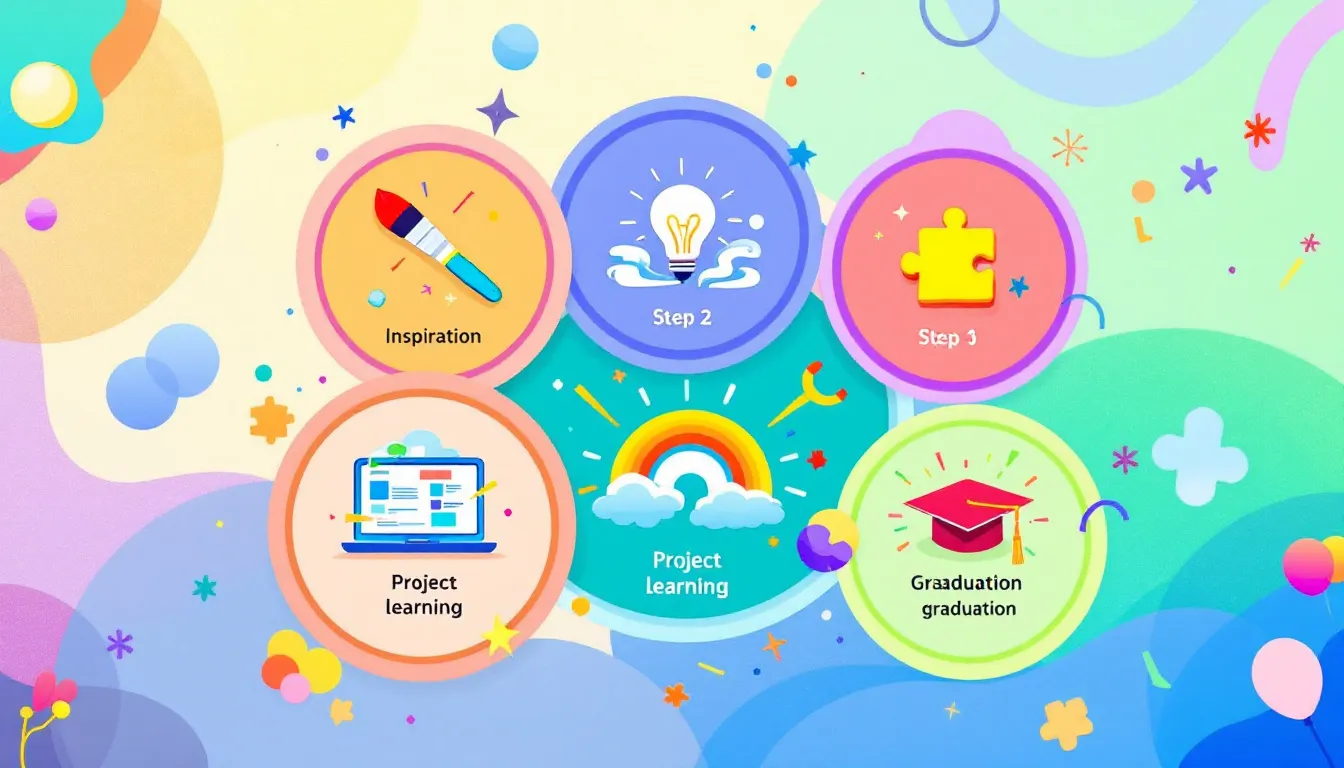Need money for your homeschool group? Here's how to crush it with crowdfunding:
- Pick the right platform (hint: look for low fees)
- Tell your group's story (make it personal)
- Set clear money goals (be realistic)
- Use local connections (tap into your community)
- Give useful thank-you gifts (on a budget)
- Make your campaign page pop (use video)
- Keep talking to your supporters (update often)
Quick facts:
- 6% of US kids were homeschooled in 2022-2023
- Homeschooling costs $300-$3,000 per student yearly
- Most successful Kickstarter projects raise under $10,000
| Strategy | Key Point |
|---|---|
| Platform | Low fees |
| Story | Personal touch |
| Goals | Realistic targets |
| Connections | Local community |
| Gifts | Budget-friendly |
| Page | Use video |
| Communication | Regular updates |
Ready to fund your homeschool group? Let's dive in!
Related video from YouTube
1. Pick the Best Crowdfunding Website
Choosing the right crowdfunding platform can make or break your homeschool group's fundraising efforts. Here's how to do it:
First, look at the fees. Some platforms take a big chunk of your funds, while others don't. Check out this comparison:
| Platform | Platform Fee | Processing Fee |
|---|---|---|
| Zeffy | 0% | 0% |
| GiveButter | Up to 5% | 2.9% + $0.30 |
| Indiegogo | 5% | 3% + $0.20 |
| Kickstarter | 5% | 3-5% |
Zeffy's zero fees? That's pretty sweet.
Next, dig into user reviews on sites like G2 and Capterra. They'll give you the real scoop on how easy and reliable each platform is.
Think about what you need. Planning a virtual auction? Make sure your platform can handle it.
Look for extras like event management tools, donor tracking, and social media integration. They can make your life a lot easier.
And don't forget to test drive the platform. Many offer free trials, so take them for a spin.
"After nine years of using a different online payment site for our successful nonprofit, we discovered Zeffy could have saved us five digits annually. We run campaigns 365 days a year and use Zeffy daily." - Kendra C.
This quote? It's a perfect example of how the right platform can save you serious cash in the long run.
Bottom line: Take your time, compare options, and pick the platform that fits your group's needs and skills. It's worth the effort.
2. Tell Your Group's Story
Your homeschool group's story is the heart of your crowdfunding campaign. Here's how to make it shine:
Share real stories. Like the Johnsons:
"Emily struggled with math in traditional school. After six months in our co-op, she's now tutoring younger kids."
Show your impact:
- Families served
- Educational wins
- Community involvement
Use visuals. Include:
- Group activity photos
- Short video testimonials
- Growth infographics
Be specific about your needs:
| Amount | Purpose |
|---|---|
| $500 | Science lab equipment |
| $1,000 | Museum field trip |
| $2,500 | Guest speakers |
Paint a picture:
"Your support can turn our old computer lab into a tech center for coding, 3D printing, and robotics."
Keep it short. Aim for a quick 2-3 minute read.
3. Set Clear Money Goals
Want your homeschool group's crowdfunding to succeed? Set clear money goals. Here's how:
1. Calculate total costs
Break down expenses:
| Expense Type | Amount |
|---|---|
| Educational materials | $X,XXX |
| Field trip fees | $X,XXX |
| Equipment | $X,XXX |
| Administrative costs | $X,XXX |
| Platform fees (5-10%) | $XXX |
| Reward fulfillment (up to 20%) | $X,XXX |
Add 10% for surprises.
2. Set a realistic target
Most successful Kickstarter projects raise under $10,000. The average goal? $5,000. Don't aim too high or too low.
3. Use SMART goals
Make your goal:
- Specific: "Raise $7,500 for new science lab equipment"
- Measurable: Track daily
- Achievable: Based on your network
- Results-focused: Tie to outcomes
- Time-bound: 30-60 day campaign
4. Choose your funding strategy
Pick between:
- Fixed funding: All-or-nothing (Kickstarter's style)
- Flexible funding: Keep what you raise (some platforms offer this)
5. Break it down
Set milestones:
| Milestone | Amount | Timeline |
|---|---|---|
| Initial push | $2,000 | Week 1 |
| Midway goal | $4,000 | Day 20 |
| Final stretch | $7,500 | Day 40 |
Remember: Clear goals = better chances of success. So, crunch those numbers and set smart targets!
4. Use Your Local Connections
Boost your homeschool group's crowdfunding by tapping into your local community. Here's how:
- Partner with local businesses
Ask small and mid-sized companies to support your cause. A local bookstore might donate a percentage of sales, or a nearby restaurant could host a "dine and donate" night.
- Join community organizations
Get involved with Kiwanis, Lion's Clubs, or your Chamber of Commerce. These connections can lead to support from education-focused business leaders.
- Work with schools and educational programs
| Resource | Potential Benefits |
|---|---|
| Public schools | Access to individual classes |
| Charter schools | Reimbursement for educational expenses |
| State education department | Information on homeschool-friendly programs |
- Engage with religious institutions
Large churches often have connections to business leaders who might back your cause.
- Host community events
Organize walkathons, silent auctions, or fundraising galas with local sponsors.
- Use peer-to-peer fundraising
Get students and community members to create personal fundraising pages. This expands your reach.
- Create social media challenges
Design fun, shareable challenges that promote your fundraiser and involve the community.
Building local connections is a two-way street. Always show appreciation for support through thank-you notes or public recognition.
"Being actively involved in our communities is a part of who we are and dates back to the early days of Cane's. We are serving more than craveable chicken finger meals - we are serving our communities." - Todd Graves, Raising Cane's Founder
sbb-itb-fb77983
5. Give Useful Thank-You Gifts
Want to boost donor appreciation? Give them thoughtful thank-you gifts. Here's how:
-
Educational Badges: Curiosity Untamed offers customizable pins or magnets. They're motivational and fit your homeschool vibe.
-
Handwritten Notes: Nothing beats a personal touch. Write a quick note about how their donation helps.
-
Shout-Outs: Highlight donors on your website or social media. It's free and effective.
-
Small, Meaningful Items: Try these budget-friendly options:
| Gift | Cost | Why It Works |
|---|---|---|
| LED Rings (24) | $19.90 | Fun memory |
| Donut Erasers (48) | $17.28 | Useful for kids |
| Animal Erasers (120) | $16.09 | Cute and practical |
| Cartoon Keychains (20) | $13.99 | Daily reminder |
-
Experiences: Offer facility tours or event invites. It builds lasting connections.
-
Impact Updates: Show donors their impact with photos or videos. It's not physical, but it's powerful.
Balance appreciation with smart spending. As one expert puts it:
"Donors watch nonprofit budgets. Pair gifts with personal notes from staff to maximize impact and minimize costs."
6. Make Your Campaign Page Interesting
Your campaign page is your digital storefront. It needs to grab attention and keep it. Here's how:
Use video
A good video can boost your funding chances by 4x. Keep it short (2-3 minutes) and focus on your mission, the problem, and how donations help.
Make it skimmable
Break up text with short paragraphs, bullet points, and bold headings. This helps donors quickly grasp your message.
Show, don't tell
Use high-quality images of your homeschool group in action, past achievements, and any rewards you're offering.
Add social proof
Include testimonials from parents, students, and community members. This builds trust.
Keep it updated
Post updates about funding milestones, new rewards, and how you're using donations. The Gauntlet fundraising tournament in 2019 did this well. They aimed for $70,000 but raised over $115,000, partly by keeping supporters in the loop.
Make donating easy
Include clear "Donate Now" buttons throughout your page. The easier it is to give, the more likely people will do it.
7. Keep in Touch with Supporters
Staying connected with your backers is crucial for your homeschool group's crowdfunding success. Here's how to keep them in the loop:
Update regularly
Post weekly progress reports. Why? Campaigns that do this raise funds 38% faster. Share:
- Milestones hit
- How you're using the money
- Student success stories
Be honest about bumps in the road
Hit a snag? Tell your backers. Explain what happened and how you'll fix it. It builds trust.
Mix up your communication
Reach out through:
- Emails
- Social media
- Videos
- Live Q&As
Show some love
Thank your backers often:
- Send a personal "thanks" right after they donate
- Create a donor wall for big contributors
- Host a thank-you event (online or in-person)
Get them involved
Ask for their thoughts on your projects. It makes them feel connected.
Share the wins
Show how donations are making a difference:
"Your support bought new science gear for our co-op. Now our kids are doing experiments they couldn't before!"
Conclusion
Crowdfunding can be a game-changer for homeschool groups. It's not just about the money - it's a chance to show off what your group can do and build a loyal fan base.
Here's the deal:
- Pick a platform that fits
- Tell a story that grabs people
- Set goals you can actually hit
- Get your local crew on board early
- Give rewards people actually want
- Make your campaign page pop
- Keep talking to your backers
Here's something to chew on: The Census Bureau says nearly 6% of US kids were homeschooled in 2022-2023. That number's likely to go up in 2024.
So what does this mean for you? Crowdfunding isn't just a quick cash grab. It's setting you up for the long haul. Start small, learn as you go, and watch your impact grow.
Ready to give it a shot?
FAQs
How do I get my crowdfunding campaign noticed?
Getting your homeschool group's crowdfunding campaign noticed isn't rocket science. Here's what you need to do:
Blast it on social media. Use your group's accounts to share updates and stories. Don't just post once and forget about it - keep the momentum going.
If you've got some budget, try paid ads on Facebook or Instagram. They can help you reach people outside your usual circle.
Don't forget about good old email. Send out messages to everyone on your contact list - parents, supporters, local folks, you name it.
Start building buzz BEFORE you launch. Give people a sneak peek of what's coming. Get them excited.
Once you're live, keep people in the loop. Regular updates are key.
And don't ignore your local community. Host events, put up flyers, team up with local businesses. Get creative!


